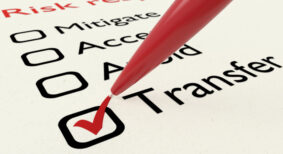Commercial building operators could use a combination of air exchange, filtration and purification to comply with the industry-leading guidance for arresting airborne spread of pathogens and contaminants. However, since MERV 13 performance is the baseline requirement — meaning removal of 90 per cent of particles larger than 1 micron and up to 75 per cent of particles that are 0.3 to 1 micron in size — one of the chief drafters of the guidance suggests a MERV 13 filter is the most straightforward and cost-effective measure in many scenarios.
Speaking during a recent webinar sponsored by the Building Owners and Managers Association (BOMA) of Canada, Luke Leung, the team leader for commercial buildings on ASHRAE’s Epidemic Task Force, provided data and modelling to demonstrate the risk of COVID-19 transmission in average office settings and to outline the comparative benefits of various approaches for ameliorating that risk. Thus far in the pandemic, epidemiological studies in both North America and Europe have found lower incidence of infection in offices than in residential dwellings or other types of venues where people can interact, but that hasn’t necessarily translated into office workers’ perceptions.
“A lot of time when we talk about COVID, and especially in the HVAC context, it’s really about the risk level we want to tolerate,” Leung reflected.
“It isn’t just about being safe. It’s also about feeling safe,” concurred his co-presenter, Steve Horwood, vice president, national building development, with the HVAC service provider, GDI Integrated Facility Services/Ainsworth.
Together, the presenters weighed in on four complementary approaches for addressing indoor environmental quality: ventilation; filtration; air cleaning or purification; and occupancy and space configuration considerations. Although data-crunchers are still catching up with the rapid emergence of the omicron variant, the ASHRAE task force is also considering early evidence of a potential fivefold increase in transmissibility.
Pre-omicron research indicated that, on average, there was a 1.4 per cent chance that one infected person could transmit the COVID virus to others within an office space that adhered to ASHRAE’s HVAC guidance if it was fully occupied and no one was wearing a mask. That likelihood fell below1 per cent with a lesser density of occupants wearing masks, but, even prior to the omicron variant, other variables could influence risk.
For example, there is some scientific evidence that a small fraction (approximately 2 per cent) of infected people generate vastly disproportionate quantities of the COVID virus, making them more virulent transmitters. “Your risk level could be significantly higher if you have a super spreader in your office,” Leung acknowledged.
Outdoor air brings energy-use penalties
Beginning with outdoor air intake, ASHRAE’s core recommendations are simply that buildings maintain at least the minimum outdoor airflow rates specified in applicable codes and standards. That’s based on the evidence that 100 per cent outdoor air would deliver a small increment of added risk reduction where MERV 13 performance is in place, but would typically come with a significant impact on energy use.
Even if there is no impact on energy use, Leung cautioned that operators will have to monitor outdoor air quality. As well, he noted that a radiant heating/cooling system, which is coupled with a dedicated outdoor air system (DOAS) for ventilation, brings in far less outdoor air than conventional HVAC systems — an energy-saving design distinction that’s less adept in the context of omicron.
“Your risk level can be higher because there’s just much less air to circulate around,” he explained. “A MERV 13 filter on the fan coil unit will perform better than a dedicated outdoor handling system with a radiant ceiling.”
Filtration and pressure drops
Leung pegged the “first cost” or required capital outlay for MERV 13 filtration at about USD $0.25 per cubic feet per minute (cfm) of air handled compared to about USD $1.3 per cfm for ultraviolet (UV) light technology or up to $5 per cfm for other air cleaning options. Addressing concerns that MERV 13 filters restrain airflow to an extent that can cause a problematic drop in air pressure, Horwood reported he had seen some good results in a series of tests his company conducted to assess air pressure dynamics across the range of filters from MERV 8 to 13, and theorized that other aspects of product quality also come into play.
“Not all filters were made equal. In about half of the situations, we actually had worse performance from MERV 8 filters because of the material that was used,” he recounted. “We did not see the pressure drop in airflow concerns (for MERV 13) that most people anticipated that we would see.”
That said, Leung advised pressure drops and associated operating cost repercussions would be unavoidable with more rigorous filtration in the MERV 14+ range. To achieve performance of that level, building operators could use a MERV 13 filter in combination with air purification technology.
Purification can have maintenance implications
UV light is an established means for destroying pathogens and disinfecting solid surfaces, and Horwood reported it has shown good results as an air cleaner. To get those results, though, he stressed that the application must be suited to the HVAC system’s size and capacity.
“It’s not something that you can just pluck off the shelf. There needs to be a certain level of millijoules per square centimetre through the full surface of the duct and the velocity of the air through the duct,” he explained. “Be cautious, particularly if you’re talking about large volume air and a (UV) system that is multiple smaller lamps. Multiple smaller lamps increase the opportunity for failure and can increase the maintenance.”
Looking at other air-cleaning applications, Leung suggested ionizers could be a largely redundant precaution in elevator cabs. That’s based on the short duration of elevator trips and the assumptions that the elevator has an exhaust fan facilitating up to 70 air exchanges per hour and that passengers will be wearing masks.
Citing a Chicago study that estimated there’s 0.005 per cent chance of becoming infected in those conditions, he expressed his own confidence in vertical travel. “I don’t feel particularly concerned if I get into an elevator and people are wearing masks,” he said.
Resources for building and facilities managers
While mask wearing is contingent on broad cooperation of office occupants, facility managers can play a role in risk reduction through awareness of directional airflow and the impact of office configurations. Leung described localized airflow patterns as a quirk that can’t be foreseen in big-picture recommendations, pointing, for example, to a well publicized case of airborne spread within a restaurant. “Heavy air flowing in one direction with high velocity is part of the reason why the person got infected over 20 feel away from the source,” he noted.
A paper to be presented at ASHRAE’s 2022 winter conference next week examines how office furnishing can affect air circulation and best practices for furniture arrangement. “It can be a value-add for your tenant,” Leung said.
Turning to tools for building managers and operators, Horwood promoted the free online calculator his company has developed to help navigate ASHRAE’s formula for outdoor air equivalency. “You just need nominal knowledge about HVAC systems. You can slot in your square footage, what height, what MERV filter you are using, if you’re using UVC, if you’re using HEPA, and it will demonstrate the benefits of using MERV 13 or using other devices, but with MERV 13 being the easiest,” he said.
“Nice. That’s equivalent outdoor air made easy by Steve’s team,” Leung quipped.
Barbara Carss is editor-in-chief of Canadian Property Management.







